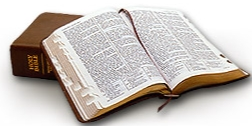Marriage has been a moral and political subject for a very long time, while the practice goes back to ancient history. Discussions of who and how many can join together are found all over the place. The current hot topic asks the question if Mormon marriages are supposed to be equal or patriarchal authoritative. What hasn’t been talked about much is the equally growing number of marriage dissolution. Couples have been divorcing at greater numbers each year. This isn’t just the case outside the LDS Church, but within the Mormon community. Worse yet is an ever increasing rate of Temple Marriage sealings getting dissolved. The trend has become serious enough that LDS President made mention in the April 2011 General Conference of his concerns:
Now, brethren, I turn to another subject about which I feel impressed to address you. In the three years since I was sustained as President of the Church, I believe the saddest and most discouraging responsibility I have each week is the handling of cancellations of sealings. Each one was preceded by a joyous marriage in the house of the Lord, where a loving couple was beginning a new life together and looking forward to spending the rest of eternity with each other. And then months and years go by, and for one reason or another, love dies. It may be the result of financial problems, lack of communication, uncontrolled tempers, interference from in-laws, entanglement in sin. There are any number of reasons. In most cases divorce does not have to be the outcome.
The vast majority of requests for cancellations of sealings come from women who tried desperately to make a go of the marriage but who, in the final analysis, could not overcome the problems.
The high profile re-marriage of Marie Osmond to her first husband Stephen Craig is a small reminder of how fragile relationships seem to be for modern couples. Her choice will be commented on a bit later. Hopefully the second time around will last for the Eternal promise made in the LDS Temple vows. Why it didn’t work out the first time is a personal issue, but the failure is far from typical for too many. Multiple divorces and marriages are no longer associated mostly with the rich and high profile entertainers. The opinion of the Lord on this matter is not hard to find even if forgotten by the Saints. He would not be pleased. Continue reading

